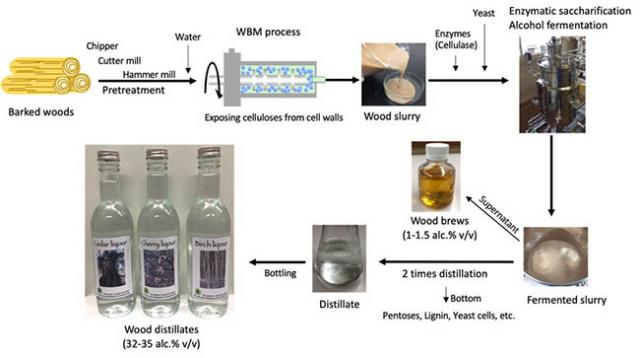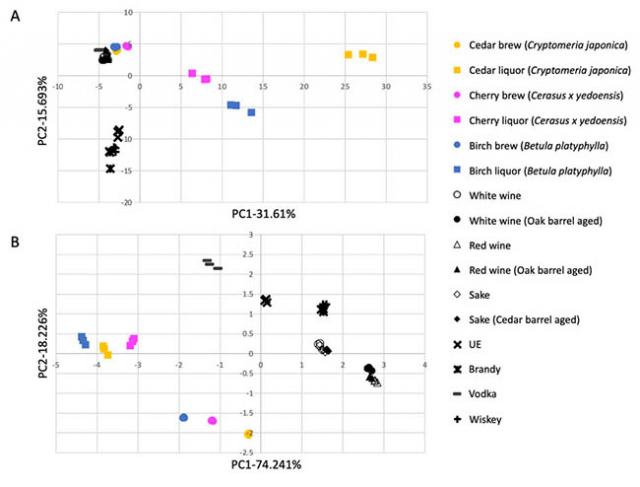Home > Research > Research Results > Research Results 2020 > The world's first wood brews and liquors were unique in taste and aroma compared to existing alcohol beverages
Update:December 21, 2020
Main content starts here.
The world's first wood brews and liquors were unique in taste and aroma compared to existing alcohol beverages
| Article title |
Production of flavorful alcohols from woods and possible applications for wood brews and liquors |
|---|---|
| Author (affiliation) |
Yuichiro Otsuka (a), Masanobu Nojiri (a), Norihisa Kusumoto (a), Ronald R. Navarro (a), Koh Hashida (a), Naoyuki Matsui (a) (a) Department of Forest Resource Chemistry, FFPRI, Tsukuba, Ibaraki, Japan. |
| Publication Journal |
RSC Advances, 10, 39753-39762, November 2020 DOI:10.1039/d0ra06807a( External link ) |
| Content introduction |
Various kinds of alcoholic beverages are brewed throughout the world from raw materials that are limited to grain starch and sugars from fruits and sugarcane. In this study, we developed a technology to saccharify and ferment lignocellulose fibers from wood without heat or chemical treatment, using only water, food-grade enzymes, and brewing yeast. This method may be the first to produce alcohol and liquors from wood. We analyzed the aroma of alcohols produced from cedar, cherry, and birch wood on a trial basis. Alcohol made from cedar wood contains more aromatic components that were unique to cedar wood and those that have a woody aroma. In contrast, alcohol made from cherry wood contained floral aroma components, including jasmine, and alcohol from birch wood was found to have a fruity, sweet, and aged aroma, with fewer of the woody aroma components. These results suggest that different flavored alcohols can be produced from different wood types. In this study, we also compared the aroma and taste with commercial alcohol beverages such as wines, sake, brandy, and whiskey by multivariate analysis, and found that alcohols produced from woods have different characteristics of aroma and taste from commercial alcohols. Based on our calculations, about fifty 750 ml bottles of cedar wood liquor with 35% alcohol by volume can be made from a raw material cedar log of 30 cm (diameter) × 4 m (length). These results may have far-reaching impacts not only to the forestry industry, but also in the creation of new food cultures.
Figure 1. Schematic flowchart of the combined wet-type bead milling process, enzymatic saccharification, alcohol fermentation, and distillation process for food-grade processing of wood to produce wood brews and wood distillates.
Figure 2. Correlation map of flavor components (A) and taste sensor signals (B) between existing alcoholic drinks and alcohols made from woods. |
Copyright © Forest Research and Management Organization. All rights reserved.


